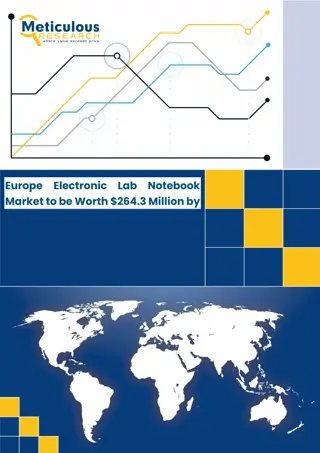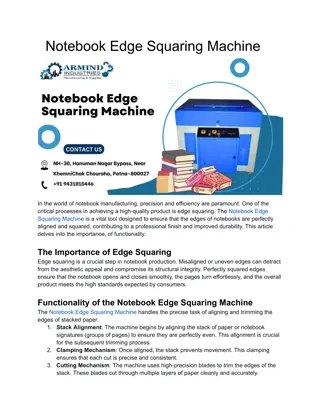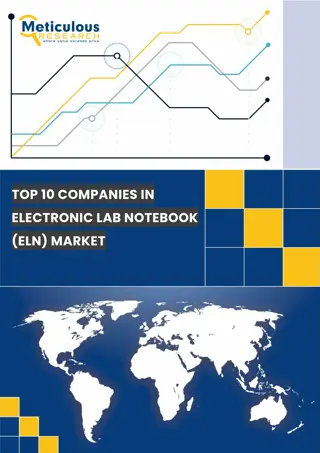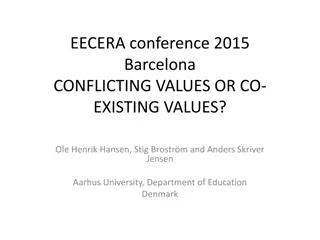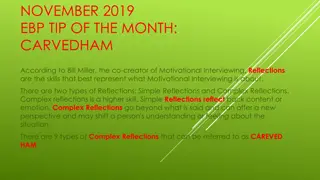The Notebook: Reflections on Life and Values
Delve into the pages of "The Notebook" to explore personal narratives, migrant experiences, and the deeper meaning of life. Engage with exercises designed to uncover desires, projects, and aspirations, guiding individuals towards a fulfilling path of self-discovery and growth.
Download Presentation

Please find below an Image/Link to download the presentation.
The content on the website is provided AS IS for your information and personal use only. It may not be sold, licensed, or shared on other websites without obtaining consent from the author.If you encounter any issues during the download, it is possible that the publisher has removed the file from their server.
You are allowed to download the files provided on this website for personal or commercial use, subject to the condition that they are used lawfully. All files are the property of their respective owners.
The content on the website is provided AS IS for your information and personal use only. It may not be sold, licensed, or shared on other websites without obtaining consent from the author.
E N D
Presentation Transcript
Rapid screening for pathogens in drinking water: preliminary results from a national scale survey in Malawi Jade Ward, Dan Lapworth, Gloria Gwengweya, Alan MacDonald, Steve Pedley, Dan Read
Why measure water quality? http://www.clker.com/cliparts/I/g/O/k/0/b/red-stick-figure-hi.png http://www.clker.com/cliparts/m/i/V/n/p/E/stick-man.svg
Water quality in Sub-Saharan Africa Access to improved drinking water source Access to improved sanitation 1990 2015 http://imgarcade.com/pit-latrine.html
Study Area Rural Malawi Dry season 2016 5 districts 182 drinking water sources End of wet season 2017 2 districts 40 drinking water sources
Detecting microbial contamination Emerging technology Fluorimeter measuring Tryptophan-like fluorescence
Factors influencing Tryptophan-like Fluorescence 1.Temperature thermal quenching 2. Turbidity interference with sensor 3. Coloured dissolved organic matter interference with TLF peak
Results - Temperature 35 30 Tryptophan-like Fluorescence (QSU) 25 20 15 10 5 0 20 22 24 26 28 30 Temperature (C) Sept - Dec 2016 (Dry) Mar - Apr 2017 (Wet)
Results - Turbidity 35 30 25 TLF (QSU) 20 15 10 5 0 0 100 200 300 400 500 Turbidity (NTU) Sept - Dec 2016 (Dry) Mar - Apr 2017 (Wet)
Results Coloured Dissolved Organic Matter - fluorimeter 35 30 Tryptophan (QSU) 25 20 15 35 10 30 5 Tryptophan (QSU) 25 0 20 18 28 38 48 58 CDOM fluorimeter 15 10 5 0 18 18.5 19 CDOM fluorimeter 19.5 20 20.5 21
Results Dissolved Organic Carbon laboratory analysis 35 30 Tryptophan (QSU) 25 20 15 10 70 5 60 CDOM fluorimeter 0 50 0 2 4 6 8 10 40 DOC mg/l 30 20 10 0 0 2 4 6 8 10 DOC mg/l
Factors influencing Tryptophan-like Fluorescence 1. Temperature thermal quenching 2. Turbidity interference with sensor 3. Coloured dissolved organic matter interference with TLF peak
Conclusions 1. Temperature, turbidity and dissolved organic carbon measurements should always be recorded when using TLF 2. Temperature stability of groundwater suits the application of TLF 3. Low turbidity of groundwater suits the application of TLF 4. Coloured dissolved organic carbon fluorescence does not typically influence TLF readings 5. In cases of exceptionally high turbidity and variable CDOM readings, more detailed microbiological analysis should be undertaken.
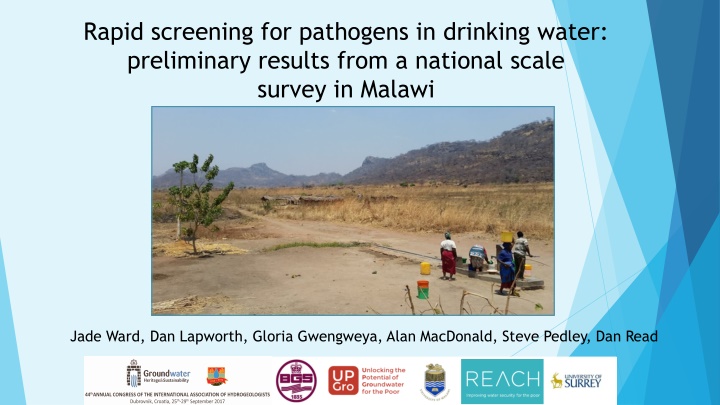



![GET [✔PDF✔] DOWNLOAD✔ My Vegan Recipe Notebook for all your recipes - 6x9 i](/thumb/68090/get-pdf-download-my-vegan-recipe-notebook-for-all-your-recipes-6x9-i.jpg)

